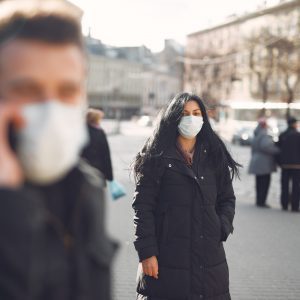It is common knowledge that healthcare costs rise exponentially and medical schemes have to find ways to reduce costs both for the medical scheme and its members. Kathy Malherbe spoke to Dr Morgan Mkhatshwa, Head of Operations at Bonitas Medical Fund, about generics and biosimilars and how they contribute towards reducing healthcare costs.
One of the cost drivers is medication which is why The Pharmacy Act of 1997 and the Medicines Control Amendment Act, among other things, have made it mandatory for dispensers of medicine, be they doctors or pharmacists, to offer a patient a generic substitute if one is available. However, generics are not the only cost savers. The patent expiry on many biological medicines is opening the door to more affordable, life-saving ‘biosimilars’ to be produced – another ‘champion’ in the pharmaceutical industry.
Increased consolidation in the healthcare industry is also having a positive impact on medicine prices and availability. Medical aids are trying to create more competition, even among medicines that are still under patent. They are also tightening up their formularies, in part to encourage pharmaceutical manufacturers to provide better pricing.
What is a generic drug?
A generic is a pharmaceutical drug that contains the same chemical substance as a drug that was originally protected by chemical patents. It is an exact copy of brand-name drugs that has the same dosage, intended use, effects, risks, safety and strength as the original. In other words, their pharmacological effects are identical to those of their brand-name counterparts.
But at a much more affordable price… Generic medicines cost, on average, between 30 and 80% less than the original.
What guarantee is there that generics are true replicas?
In South Africa, the Medicines Control Council (MCC) carries the responsibility of making sure that generic drugs are safe and effective. Generic drug manufacturers have to prove their medicine is bioequivalent to the original brand before a product is approved into the local market.
What is a biosimilar?
Biological drugs are large, complex proteins made from living cells through highly complex manufacturing processes. Biosimilars are a close equivalent but not exact copies of biologicals. and are manufactured after the patent for the biological/reference drug ends. To be called a biosimilar drug, it must be shown to be safe, work as well as, and work in the same way as its reference drug – the biological. It must also be used in the same way, at the same dose, and for the same condition as the reference drug. The cost of manufacturing biological medicines is more expensive than conventional chemically produced medicines and, because biosimilars are close copies, they remain expensive but are still more cost effective that the original.
What are they used to treat?
The most important biological medicines are used to treat conditions such as rheumatoid arthritis, Crohn’s disease, multiple sclerosis, diabetes and cancers.
How are they different from generics?
The reason biological copies are called biosimilars is that, unlike generic medicines, the active ingredients are not exactly the same as the original but ‘similar.’ It is impossible to make identical copies when ‘translating’ biological molecules from living cells in the laboratory. Very importantly to note though, is that even though biosimilars are not a direct copy, the therapeutic effect is the same as the original biological product.
Why are generics and biosimilars less expensive?
Generics
Pharmaceutical companies are researching and testing new active ingredients and medicines all the time. The patent is valid for about 20 years which means that only the approved company may research, create a new formulation (the ‘recipe’ and process for creating the actual medicine) and register the medicine. This takes years and carries a huge financial burden. After about 8 to 10 years on the market the patent usually expires and other drug companies can make an exact copy of the drug without the initial clinical research costs.
Biosimilars
While these medicines have revolutionised treatments for many diseases, the research and development expenses, including the costs of highly skilled scientists, clinical trials and the specialised equipment needed, are the main cost drivers. Companies are required to fund these costs, often in excess of 10 years, before registration for use by patients.
Biosimilars save costs because:
- The molecule and effects have already been discovered and identified by the originator;
- The number of patients required in the clinical trials is reduced; and
- The original biological medicine would have been ‘manufactured’ at least 20 years ago. New manufacturing methods are more efficient.
The cost-efficiencies, which generic and biosimilar medicines provide, are assuming greater importance for state and private health funders as populations age and the prevalence of cancers and other non-communicable diseases increase.
SA’s already stretched healthcare budget is coming under increasing pressure to fund the high cost of pharmaceuticals, especially biological medicines. While generics and biosimilars may not be a panacea for high healthcare costs, they will go a long way towards offering a cost-effective, quality treatment for a large range of diseases. In addition, these breakthrough treatments can halt progression and sometimes even prevent recurrence by acting on proteins that affect the genome/immune system.









